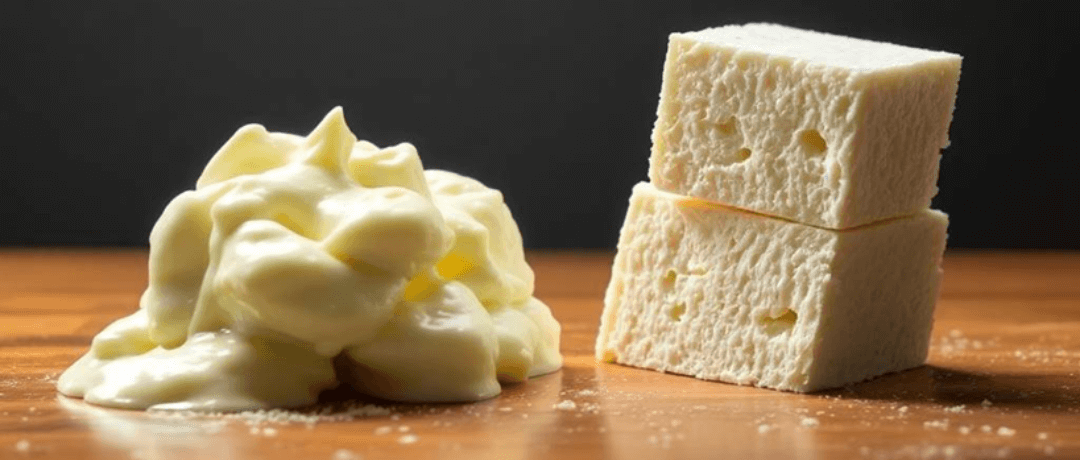
Table of Contents
Why Doesn’t Paneer Melt?
If you’ve ever noticed that mozzarella melts beautifully on a pizza while paneer stays firm in your curry, you’ve probably wondered — why doesn’t paneer melt?
Both are made from milk, yet their behavior under heat is completely different. The answer lies in food science — in the way milk proteins react to acid, enzymes, moisture, and fat.
Understanding this difference is not just interesting for food lovers but also useful for anyone who wants to cook smarter, prevent food adulteration, or choose the right type of cheese for a recipe.
Let’s explore the science behind paneer vs mozzarella, their making process, and how the melting point of mozzarella cheese plays a major role in creating that stretchy magic.
What is cheese?
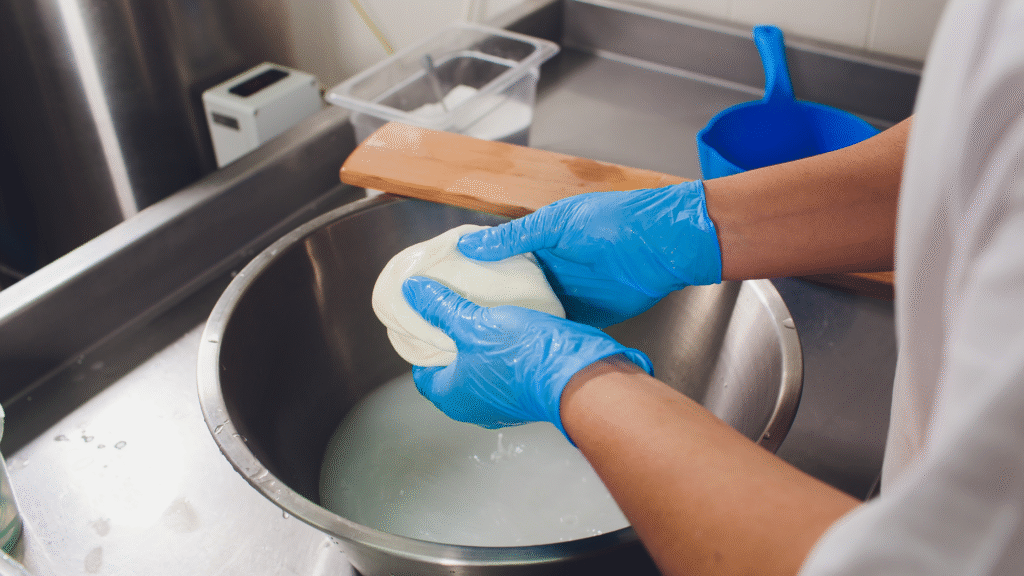
Cheese = Milk + Acid/Enzyme + Time + Heat
To understand why mozzarella melts and paneer doesn’t, we first need to understand what cheese really is.
At its simplest, cheese is concentrated milk — a transformation of liquid milk into a solid (or semi-solid) form through a process called coagulation. This process involves separating the milk solids (curds) from the liquid (whey) using either acid, enzymes, or a combination of both, followed by heat and time.
Here’s a basic formula that applies to almost every cheese:
Milk + Acid or Enzyme + Time + Heat = Cheese
But how you combine these elements—and in what order—creates completely different outcomes. That’s why paneer behaves so differently from mozzarella, even though they both start with the same ingredient: milk.
Paneer: The Indian Fresh Cheese
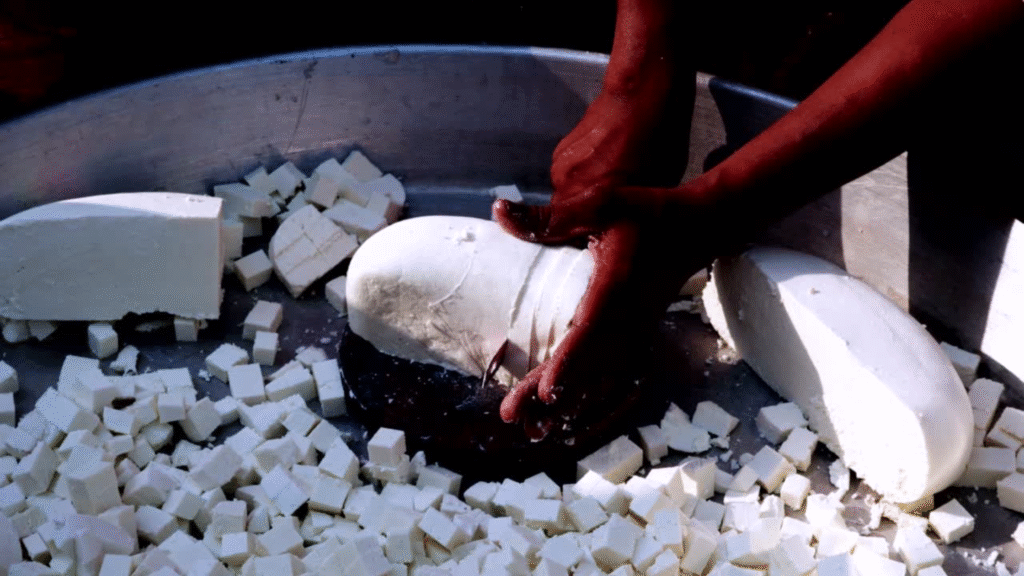
Paneer is made by boiling milk and adding an acidic ingredient like lemon juice, vinegar, or curd. This quick acid reaction curdles the milk, separating the curds from whey.
There are no enzymes, no fermentation, and no aging. Once pressed, paneer is ready within hours – fresh, firm, and rich in protein.
Because it’s acid-coagulated, the casein proteins in paneer form tight, rigid bonds. These bonds resist heat, which is why paneer doesn’t melt. It may soften a little but it never becomes gooey or stretchy.
That’s why paneer works perfectly in tikkas, curries, and stir-fries – it holds its shape and absorbs flavor without breaking down.
Mozzarella: The Western Melting Master
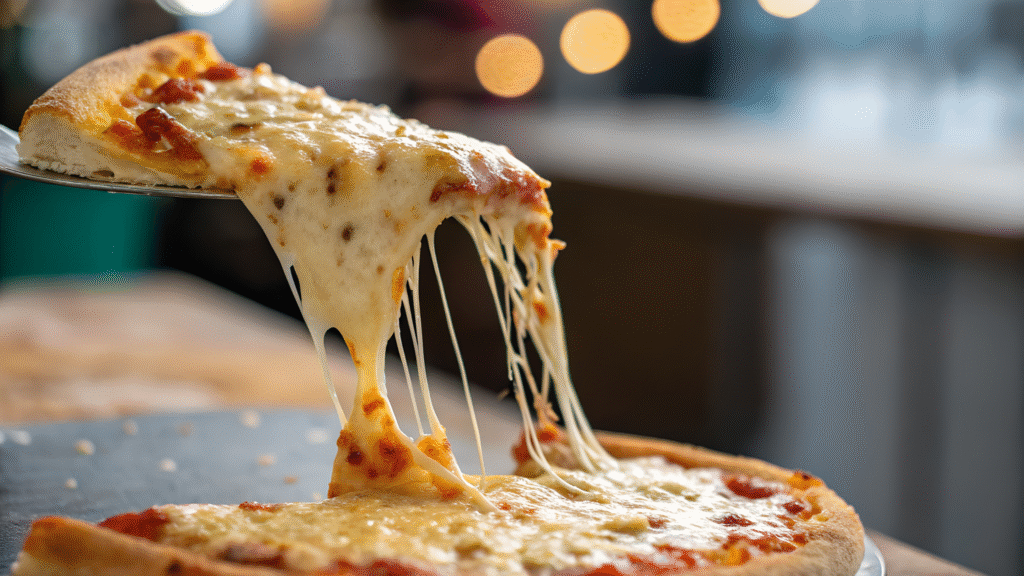
Mozzarella is made using rennet, an enzyme that curdles milk gently and slowly. The curds are then stretched and kneaded in hot water in a process called pasta filata (meaning “spun paste”).
This stretching realigns proteins into long, elastic strands. Combined with higher moisture and fat, it gives mozzarella that famous melt and stretch we love on pizzas and lasagnas.
The melting point of mozzarella cheese is around 60–70°C, where it transforms into that bubbling, stringy layer. In short, mozzarella is designed to melt, while paneer is designed to stay firm.
Paneer vs Mozzarella: The Science of Melting
| Feature | Paneer | Mozzarella |
|---|---|---|
| Coagulation | Acid-based | Enzyme-based |
| Structure | Tight, compact protein network | Flexible, elastic protein strands |
| Moisture | 30–40% | 50–60% |
| Melting Point | Does not melt | Melts at 60–70°C |
| Best For | Curries, grilling, Indian recipes | Pizza, pasta, baked dishes |
So the next time you wonder why doesn’t paneer melt like mozzarella, remember — it’s not magic, it’s chemistry.
Role of Moisture and Fat
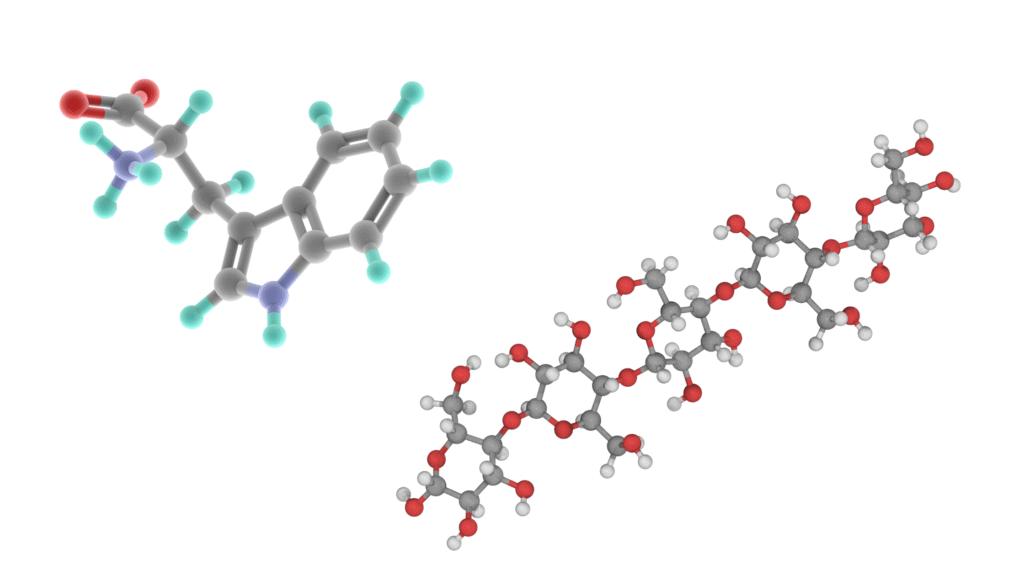
Moisture Content:
Mozzarella’s high moisture allows heat to penetrate easily, helping it melt smoothly. Paneer’s lower moisture makes it dense and heat-resistant.
Fat Content:
Fat adds richness and helps cheese melt evenly. Whole-milk mozzarella browns and bubbles beautifully. Paneer, often made with toned milk, has less fat, which makes it drier when cooked.
Indian vs Western Cheese-Making
Indian Cheese – Paneer
-
Made with acid, not rennet
-
Always fresh and unaged
-
Vegetarian-friendly
-
Holds shape during cooking
Western Cheese – Mozzarella
-
Made with microbial or animal rennet
-
Stretched and fermented slightly
-
High in moisture and fat
-
Melts beautifully under heat
This difference in technique defines how each behaves in the kitchen and on your plate.
Why It Matters
Knowing the science behind paneer vs mozzarella helps you choose the right cheese for the right dish. It also helps spot adulterated paneer and appreciate how food chemistry directly impacts taste and nutrition.
Melting Hacks for Indian Kitchens
Even though paneer doesn’t melt, you can still bring some “cheesy” texture into Indian recipes:
-
Mix paneer with mozzarella: Use a 50-50 ratio for wraps, sandwiches, or parathas.
-
Use buffalo milk paneer: It’s creamier and softer due to higher fat content.
-
Top paneer dishes with mozzarella: For baked recipes, a thin mozzarella layer gives a golden, bubbling finish.
-
Avoid overcooking paneer: Heat makes it harder, not softer. Add it at the end of cooking.
Dietitian’s Desk
As a clinical dietitian, I love how this simple example of paneer vs mozzarella teaches us that food behavior is rooted in science.
Mozzarella melts because it’s enzyme-curdled, stretched, and rich in moisture and fat. Paneer doesn’t melt because it’s acid-curdled and compact.
Both are nutritious — paneer offers fresh protein and calcium, while mozzarella adds flavor and healthy fats. What matters most is how you use them.
Frequently Asked Questions (FAQs)
-
Q1: Why doesn’t paneer melt like mozzarella?
Answer. Paneer is acid-coagulated, which creates tight protein bonds that resist heat. Mozzarella is enzyme-coagulated and stretched, which makes it melt at around 60–70°C.
-
Q2: Is it okay to mix paneer and mozzarella?
Answer. Yes, combining them gives the best of both worlds – mozzarella’s stretch and paneer’s firmness.
-
Q3: Which is healthier, paneer or mozzarella?
Answer. Paneer is high in protein and calcium and usually fresher. Mozzarella has more fat and sodium but adds flavor and calcium.
-
Q4: Can I use paneer on pizza?
Answer. Yes, but it won’t melt. Paneer stays firm while mozzarella gives that classic cheesy pull.
-
Q5: Why does mozzarella brown and bubble in the oven, but paneer doesn’t?
Answer. Mozzarella contains the right mix of fat, protein, and moisture that allows it to brown, bubble, and stretch under high heat. Paneer lacks this balance and simply heats up without undergoing that transformation.
Explore More: Recommended Reads & Videos
-
- Fake Paneer का पर्दाफाश | Viral Iodine Test Truth
Learn how to test paneer at home and identify fake vs real paneer in a market full of adulteration.
- Fake Paneer का पर्दाफाश | Viral Iodine Test Truth
-
- The Chicken Truth | Dt. Anup Agharwal
Uncover the reality behind commercial chicken — from antibiotics to ethical concerns.
- The Chicken Truth | Dt. Anup Agharwal
-
- 6 Incredible Foods for Better Digestion After Meals
Want your paneer meals to feel lighter? Discover gut-friendly foods to aid digestion.
- 6 Incredible Foods for Better Digestion After Meals
-
- Best and Worst Cooking Oils: What to Use and What to Avoid
Cheese is rich in fat — but what oil are you pairing it with? This guide helps you choose wisely.
- Best and Worst Cooking Oils: What to Use and What to Avoid
-
- 10 Essential Ramadan Diet Tips for Healthy Fasting in 2025
Looking for protein-rich vegetarian options like paneer during fasting? This guide has you covered.
- 10 Essential Ramadan Diet Tips for Healthy Fasting in 2025

🎯 10+ years of Experience
🎓 10k+ Trained ( 📍 Jaipur )
💪 Helping change people’s lives
🌿 Most trusted lifestyle counselor
